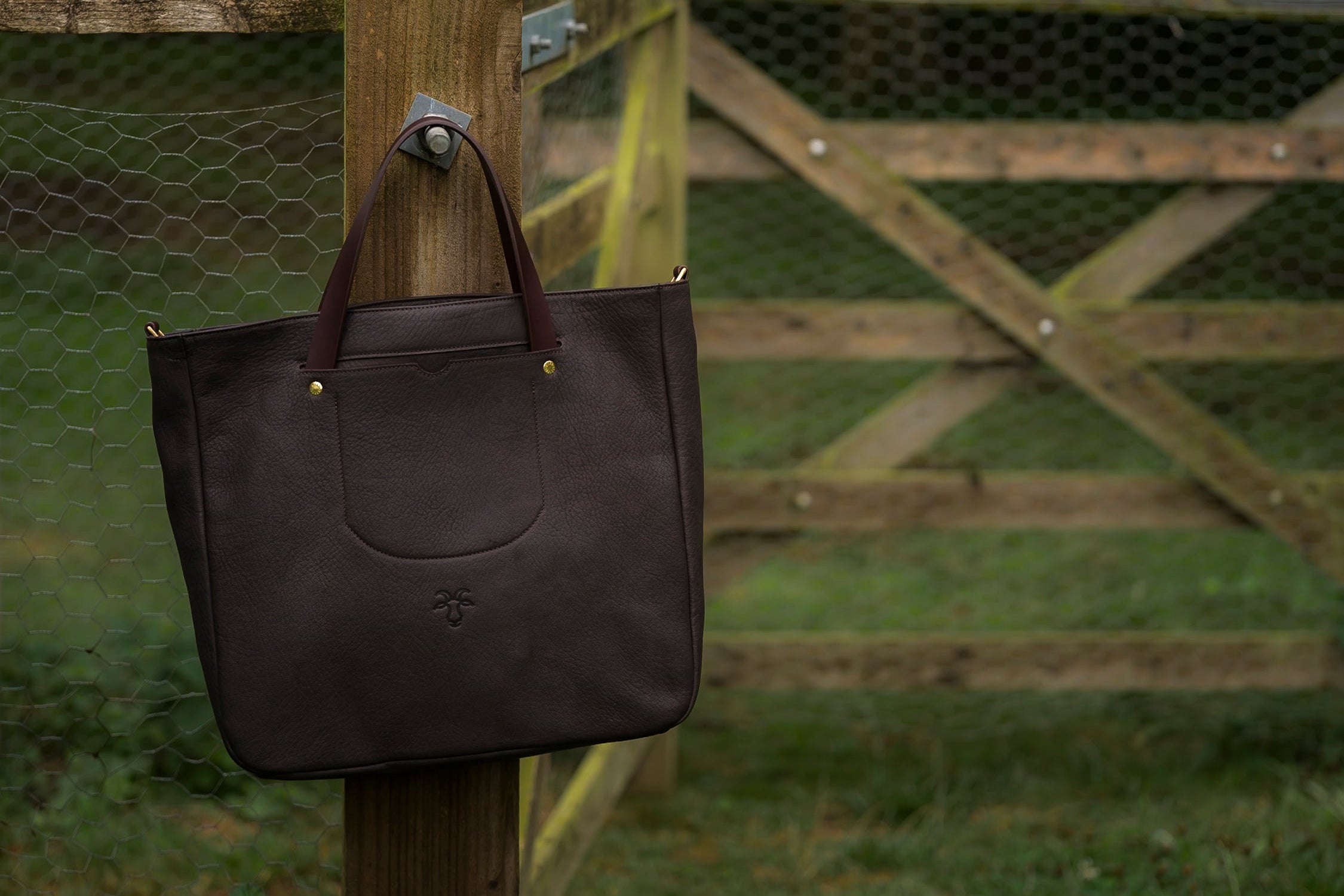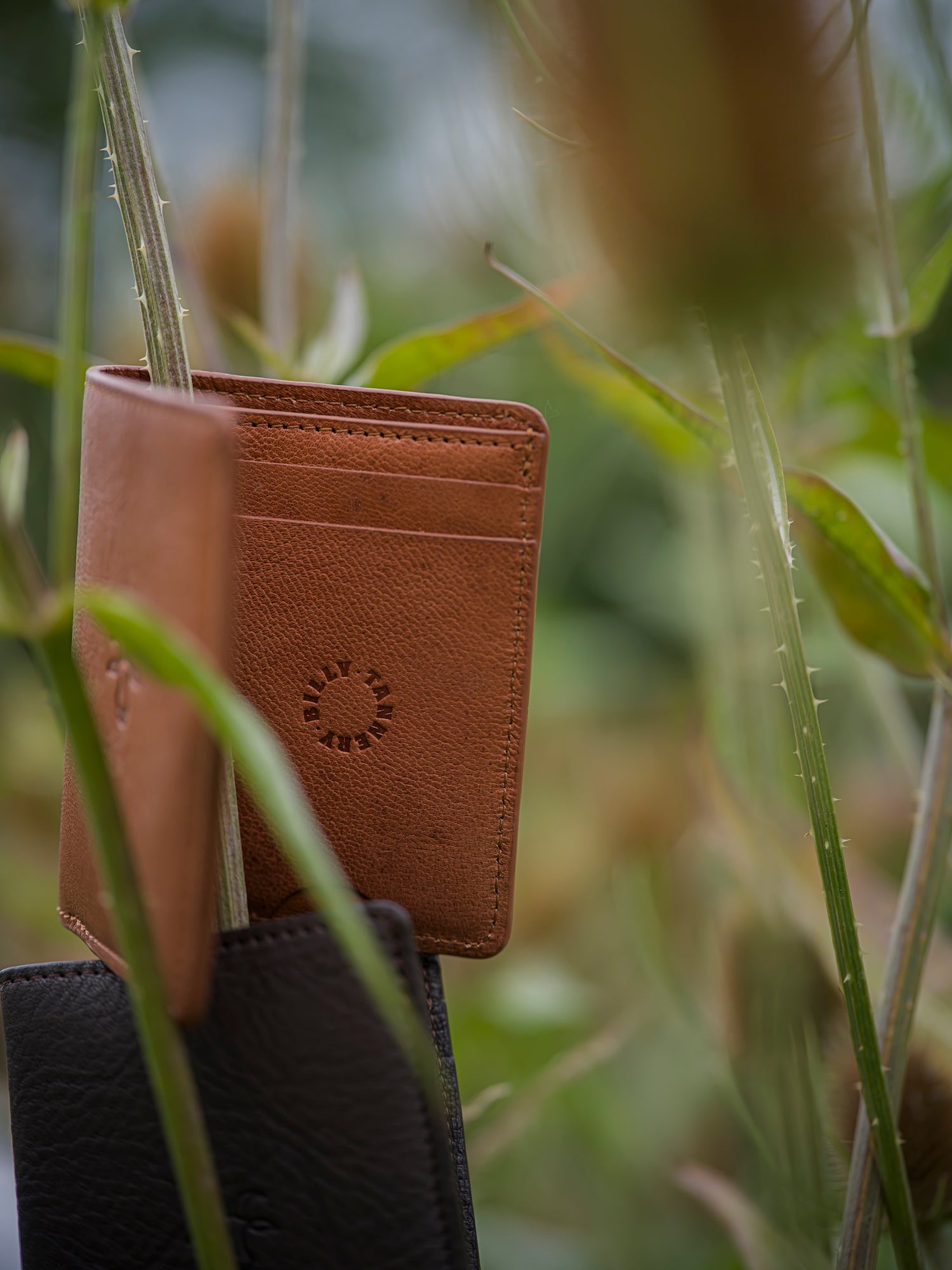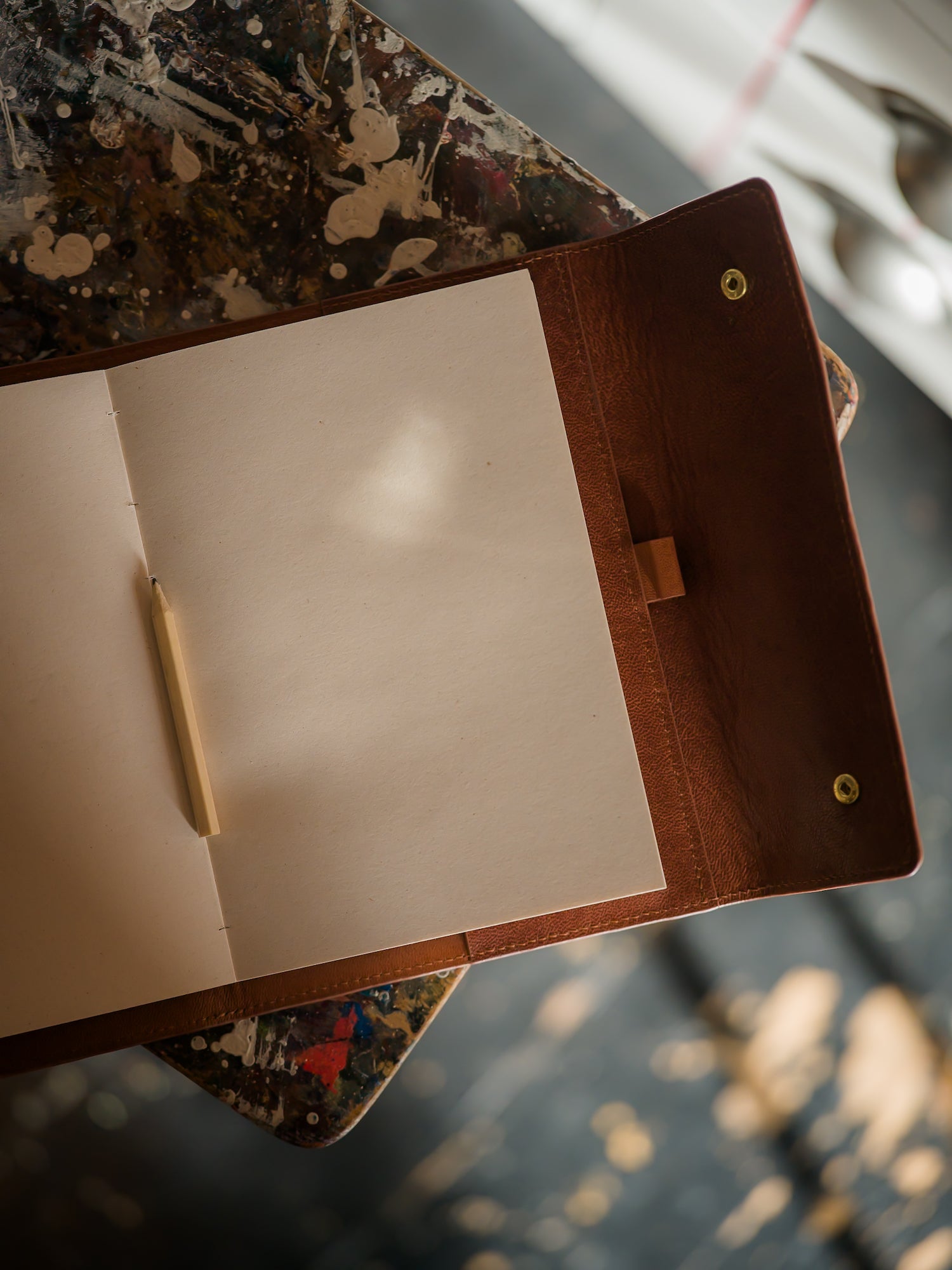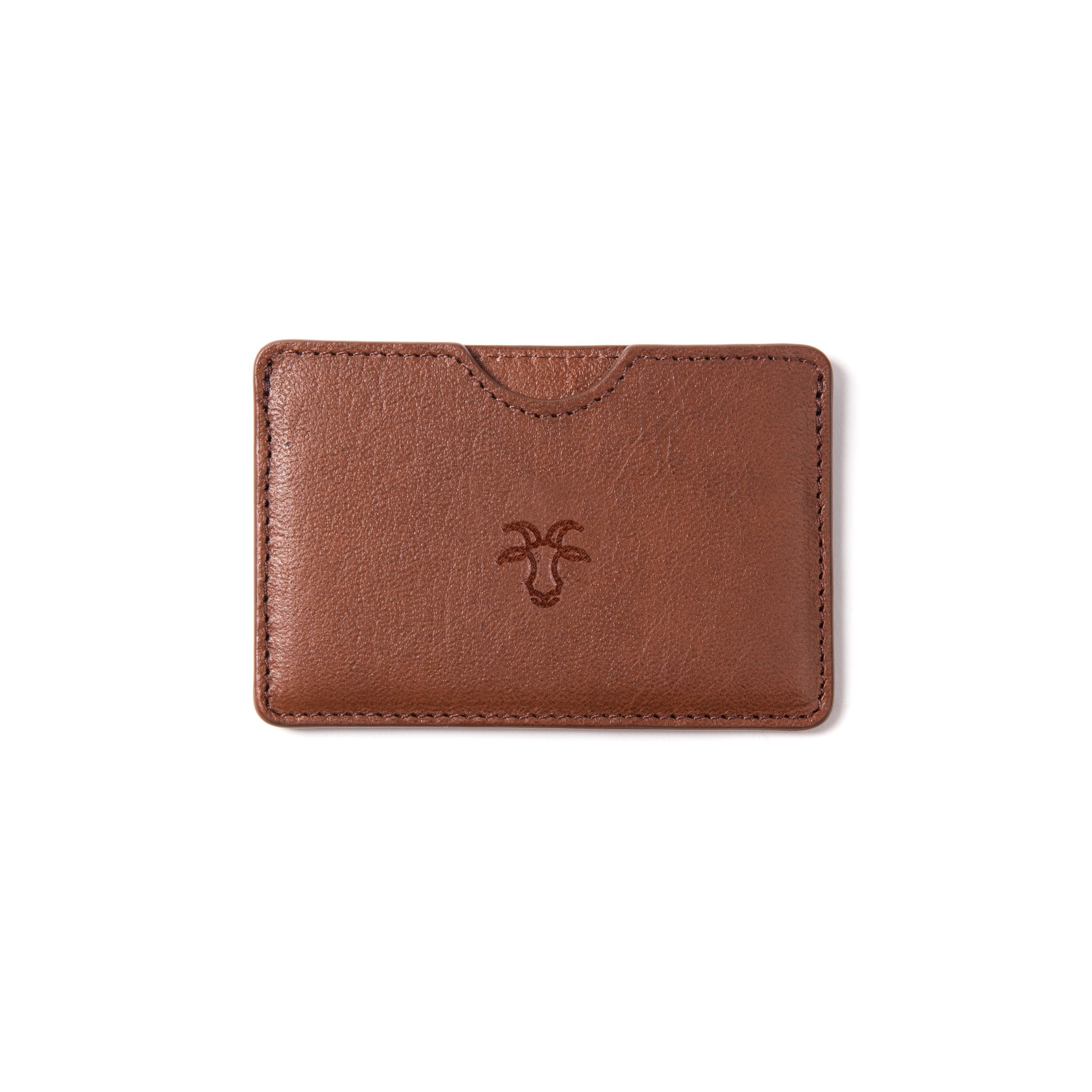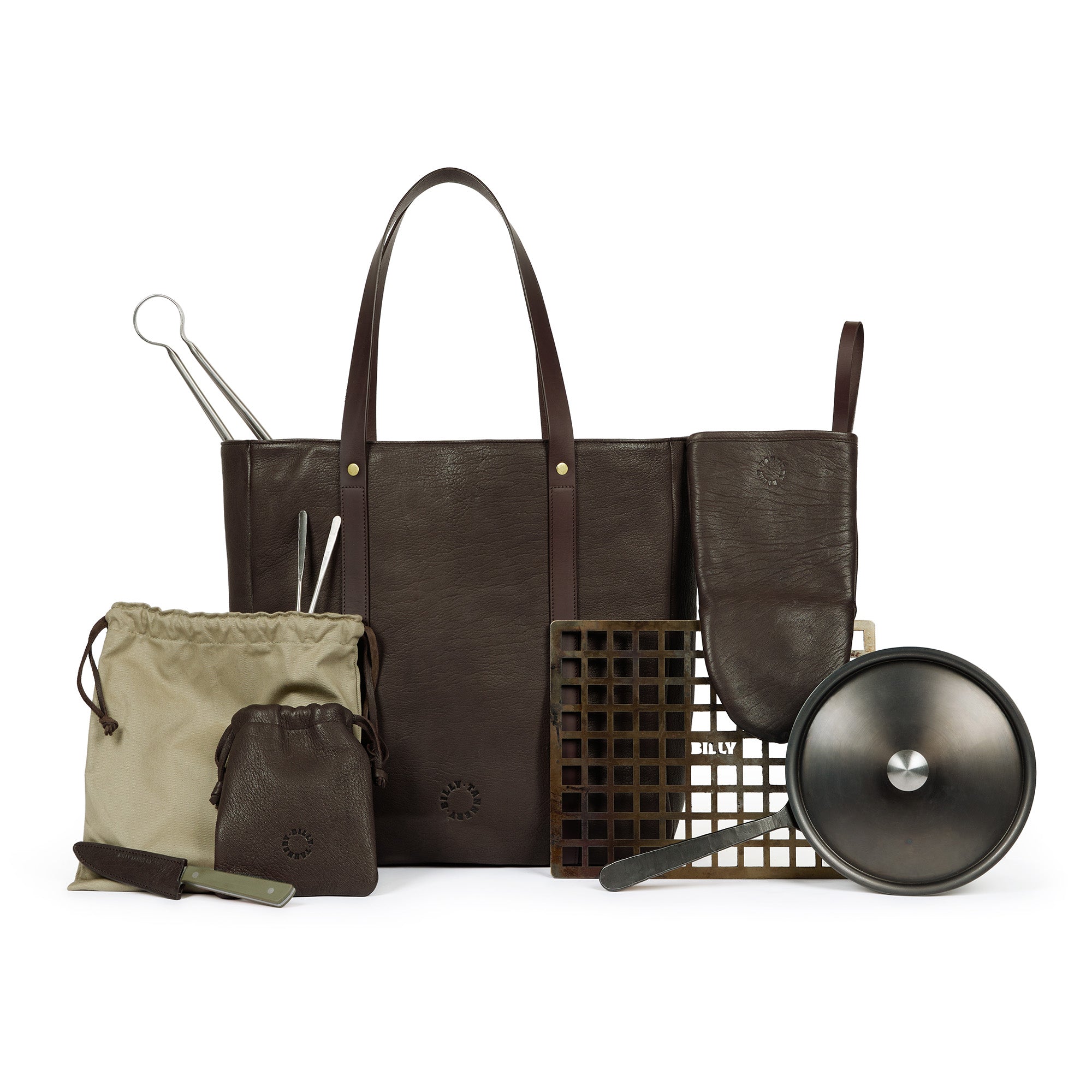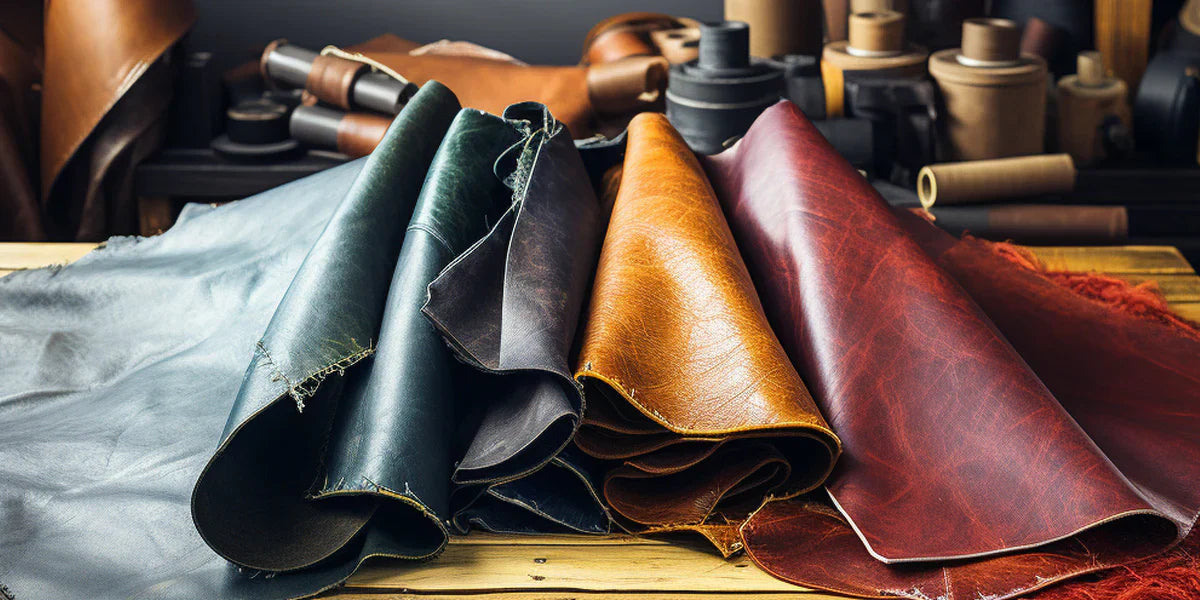Consumers have always sought choices in what they buy. However, now more than ever, people want to know where their purchases have come from, how they were made and whether they align with their personal values.
Ethical and environmental considerations have become a prominent factor in purchasing decisions. That’s why single-use plastic has fallen from favour and individuals are steering away from fast fashion. The materials used for clothing and apparel are receiving more scrutiny and sustainable options are ever-increasing in popularity.
Vegan leather is one such material that is becoming more prominent as an eco-friendly alternative to others, including real leather. But is it really?
In this guide, we look at vegan leather in detail, explaining what it is, what vegan leather is made from and how it compares to real leather in terms of sustainability and quality.
What is vegan leather?

Vegan leather, also commonly referred to as synthetic leather, faux leather or eco-leather, is the term used to describe materials that mimic the look and feel of real leather but aren’t derived from animal hides.
It can be used in similar ways to real leather and is popular in the mainstream fashion industry for making clothes, shoes, and accessories. It’s also commonly used to upholster furniture including sofas and chairs.
What is vegan leather made of?
Vegan leather can be made from synthetic or plant-based products and in recent years, there has been an increase in the variety of vegan leather available. Vegan leather is often made from the polymer polyurethane but other innovative and diverse approaches and processes are coming to the forefront, including using agricultural waste products such as pineapple leaves, apple peels and cork. Despite these strides, plastic-based vegan leather options are still the most prevalent.
Some of the most common materials used in the manufacture of vegan leather include:
Polyurethane and polyvinyl chloride
Polyvinyl chloride (PVC) and polyurethane (PU) are both petroleum-based plastics. Vegan leather made from these materials is often referred to as ‘pleather’.
PU leather is primarily made from two layers: a fabric, such as polyester or cotton which is then coated with polyurethane. Some PU leather may also undergo additional processes to add texture and colour and be backed with another material to provide additional strength.
PVC leather is similar but made slightly differently. It is constructed by combining polyvinyl chloride with stabilisers, plasticisers, and lubricants. These help to protect and soften the end material but also give it flexibility. A base material is then added. Like with PU leather, this is typically polyester, cotton, nylon, or rayon.
While this type of vegan leather doesn’t use animal hides, it does contribute to the depletion of fossil fuels and concerns have been raised about how harmful its manufacturing process is to the environment.
Cactus
Cactus leather is often made from the leaves of the nopal cactus. The specific type of cactus used is often the prickly pear cactus (Opuntia). The cactus leaves are harvested, and the fibrous structure is processed to create a leather-like material. This type of vegan leather is known for being soft and durable.
Kombucha cellulose
Kombucha leather is produced through a fermentation process involving tea, sugar, and a symbiotic culture of bacteria and yeast (SCOBY). The process creates a layer of bacteria and yeast which grows over the top of the liquid over several days. The resulting cellulose mat is then harvested, dried, and treated to create a leather-like material.
Pineapple leaves
Piñatex is a brand name for a type of vegan leather made from pineapple leaf fibres. The fibres are extracted from pineapple leaves, which are a byproduct of the pineapple industry. The fibres are then processed and woven to create a textured and durable material. Piñatex is known for its sustainability and is used to create clothing and accessories.
Silicone
Silicone leather is made from silicone, a synthetic material derived from silica, a component found in sand. It is manufactured in a somewhat similar fashion to PU or PVC leather. A base fabric, such as polyester or cotton, is coated with silicone which is then cured, textured, and coloured. Silicone leather is known for being waterproof, resistant to stains, and easy to clean. It can have a smooth and glossy appearance.
Mushrooms
Mycelium leather is made from the root structure of fungi, known as mycelium. Mycelium is grown on a substrate in a controlled environment. The resulting network of fibres is then processed and treated to create a leather-like material.
Apple peel
Apple peel leather is made from the peels and cores of apples, which are byproducts of the juicing and applesauce industries. The apple waste is processed and transformed into a leather-like material. This type of vegan leather is known for its softness and natural aesthetic.
Cork
Cork leather is made from natural cork, extracted from cork oak bark. Cork oaks grow naturally in the Mediterranean but are also grown in India and China. The trees must be at least 25 years old before the cork can be harvested and harvesting can only take place every 9 years. The process, when done by professionals, does not damage the trees. Instead, the removal of the bark promotes regeneration.
Once the bark is harvested, it is dried, steamed, boiled, cut into sheets, and given a fabric backing. The resulting cork leather has a smooth, shiny finish and is water-resistant.
Is PU leather vegan?
As has already been explained, PU leather is a synthetic material. It is considered to be vegan-friendly because it contains no animal-based products. However, its sustainability and overall environmental impact are of concern.
PU leather is derived from petrochemicals, which are non-renewable resources. The extraction and processing of these fossil fuels contribute to environmental issues, including greenhouse gas emissions. PU leather is also generally not biodegradable, meaning that when a product made from it gets thrown away, it will contribute to waste in landfills.
Is faux leather vegan?
Faux leather is a term that encompasses leather-like material derived from manmade or plant-based products. This means that faux leather is typically vegan. As already discussed, however, the overall environmental impact of faux leather can vary depending on the specific materials and manufacturing processes used. Therefore, if sustainability is a consideration alongside ethical concerns, it’s important to assess these when making your choice.
How to clean vegan leather
Cleaning vegan leather, whether it's made of polyurethane (PU), polyvinyl chloride (PVC), or plant-based materials, generally involves simple and gentle methods, although they may vary slightly based on the specific type of vegan leather. It’s a good idea to start with the gentlest cleaning method first and follow any instructions provided by the manufacturer. Here are some tips on how to clean vegan leather:
Dust and debris removal: Before cleaning, use a dry, soft cloth or a gentle brush to remove any loose dust or debris from the surface of the vegan leather.
Soap and water: For general cleaning, you can mix a small amount of mild soap, such as dish soap or gentle hand soap, with water. Dampen a soft cloth with the soapy water and gently wipe the vegan leather surface. Avoid using excessive water, as soaking the material can be damaging.
Spot cleaning: For stubborn stains or spots, you can use a solution of water and a mild detergent. Apply the solution to the stained area using a soft cloth or sponge, and gently rub the stain. Wipe away any excess moisture.
Avoid harsh chemicals: Avoid using harsh chemicals, solvents, or abrasive cleaners, as they can damage the finish of the vegan leather. Similarly, stay away from products containing bleach, alcohol, or acetone.
Dry thoroughly: After cleaning, use a dry cloth to wipe away any remaining moisture and allow the vegan leather to air dry completely. Ensure that the material is not left damp, as prolonged exposure to moisture can be detrimental.
Conditioning: Some vegan leathers may benefit from an occasional application of a mild, water-based conditioner. Follow product instructions carefully and always test on an inconspicuous area of your leather item first.
How does the quality of vegan leather compare to real leather?
Comparing the quality of vegan faux leather to real leather is not straightforward as the answer depends on the types of leather, and is based on factors including manufacturing processes, and personal preferences. Comparing pineapple leather to mass-produced bonded leather is very different to comparing PU leather to ethically sourced, sustainably produced full-grain leather like we use here at Billy Tannery.
However, we can compare some key characteristics of each:
Appearance
Real leather has a unique, natural appearance with distinct grain patterns and a luxurious feel. The variations in grain and colour are often considered desirable, contributing to the authentic and timeless aesthetic of real leather.
Vegan leather is designed to mimic the appearance of real leather. It can come in various textures and finishes which closely resemble the look of genuine leather. However, it’s easy to detect differences in pattern and sheen.
Durability
Real leather is renowned for its durability and longevity. With proper care, genuine leather can age gracefully and develop a wonderful patina over time. It tends to withstand wear and tear well and is often considered an investment due to its lasting quality.
The durability of vegan leather can vary. Generally, vegan leather is far less durable than real leather. While it is known for being resistant to water and some types of wear, it just isn't as long-lasting as real leather. PU leather, in particular, is prone to scuffing, peeling, flaking or tearing over time.
Smell
Real leather has a characteristic, rich scent that many people find appealing. The smell is often attributed to the tanning process and natural oils present in the leather.
Vegan leather does not have a defining odour and some vegan leather will have no scent at all. However, plastic-based leather can have an unappealing chemical scent.
Breathability
Faux leather tends to be less breathable than real leather. This can lead to increased sweating, making it less comfortable to wear. As it is animal skin, real leather has many tiny pores across its surface which allows the material to breathe.
Patina
One of the distinctive features of real leather is its ability to develop a patina over time. With exposure to sunlight, oils from the skin, and regular use, real leather can darken, soften, and gain a unique character that is highly sought after. In contrast, vegan leather does not develop a patina.
Is vegan leather a sustainable and ethical alternative to real leather?
Like with real leather, some vegan leathers are more sustainable and ethical than others. Vegan leather isn't without environmental implications and isn’t automatically more friendly to the planet than real leather. The transparency of supply chains, the materials used, and the production processes all must be considered.
Here are Billy Tannery, we believe that sustainable, ethical leather can be produced from animal hides and that it can actually be a better choice than vegan alternatives.
Our goat and deer hides are responsibly sourced, and we prevent them from ending up in landfill. Our micro tannery uses a vegetable tanning process which utilises none of the harsh chemicals and heavy metals associated with mass leather tanning. This also means the wastewater is repurposed and biodegradable waste products are composted.
We collaborate with UK-based companies to finish our products, being conscious of the carbon footprint associated with the movement of our products.
As our leather is such high-quality, every product made with it can last for decades if looked after and we even offer repairs so that things don’t get disposed of before their time. When our products do reach the end of their life, they will biodegrade as they are made from natural materials.
This circular design uses what the planet gives us and returns it. We can't think of something much more ethical and sustainable than that.
To find out more about the leather we use, read our goat leather guide and deerskin leather guide. Or if you want to see what we make from our ethical, sustainable leather, check out our range of luxury leather products.
